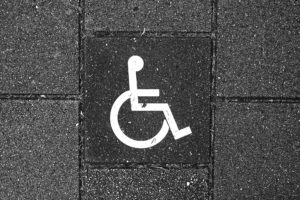 Travel wheelchairs can be carried conveniently and are easily folded, this permits you to keep up with your day without consuming so much time manipulating conventional wheelchairs that are bulky. Most travel wheelchairs are intended and designed for ease and convenience. Nonetheless, whether you have a lightweight or bulky wheelchair, it can be difficult to move without the right accessibility.
Travel wheelchairs can be carried conveniently and are easily folded, this permits you to keep up with your day without consuming so much time manipulating conventional wheelchairs that are bulky. Most travel wheelchairs are intended and designed for ease and convenience. Nonetheless, whether you have a lightweight or bulky wheelchair, it can be difficult to move without the right accessibility.
Numerous people with movement disabilities are incapable of climbing stairs or steps. Even individuals who utilize mobility aids like walkers, crutches, or other support systems may find it challenging to climb flight of stairs as well. Moreover, people who have heart or lung disabilities frequently have difficulty climbing stairwells and individuals who utilize wheelchairs in general cannot climb staircases at all. Providentially, people with mobility disabilities can utilize ramps to move vertical distances.
Legal Protections
 Laws like the ADA or federal Americans with Disabilities Act and the FHA or federal Fair Housing Act as well as other related state and local laws make certain that individuals with mobility disabilities are capable of gaining access to programs, goods, services, and housing. The idea behind these laws is that disabled individuals must be able to take part in community life just like every person. One means that the ADA and other laws that are alike ensure that individuals with mobility disabilities can access programs, goods, and services is by necessitating property proprietors and operators to make ramps available in many various circumstances.
Laws like the ADA or federal Americans with Disabilities Act and the FHA or federal Fair Housing Act as well as other related state and local laws make certain that individuals with mobility disabilities are capable of gaining access to programs, goods, services, and housing. The idea behind these laws is that disabled individuals must be able to take part in community life just like every person. One means that the ADA and other laws that are alike ensure that individuals with mobility disabilities can access programs, goods, and services is by necessitating property proprietors and operators to make ramps available in many various circumstances.
Requirements For Accessibility
Although other particular businesses, housing provider, government programs or transport unit is not obligated to make ramps available, in general that entity is necessitated to provide a means for individuals with movement disabilities to gain access to their services. In some cases, this could mean providing the said service in a different manner, setting, or location. For example, local governments like counties or cities are frequently mandated to provide a considerable sized ramps known as curb cuts to let persons with disabilities to have access to sidewalks.
Access ramp and identical structures allow individuals with disabilities to completely join in and play a part in community life. Knowledge and understanding the accessibility requirements of the law can assist people with disabilities as well as to educate providers of housing, business, government, and transport service industries so as to attain their entitled degree of access.

